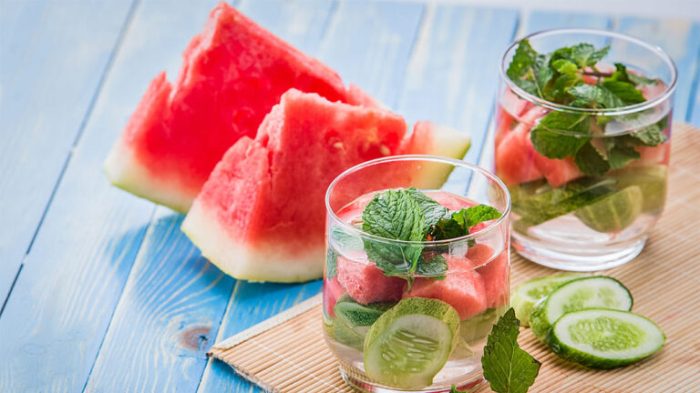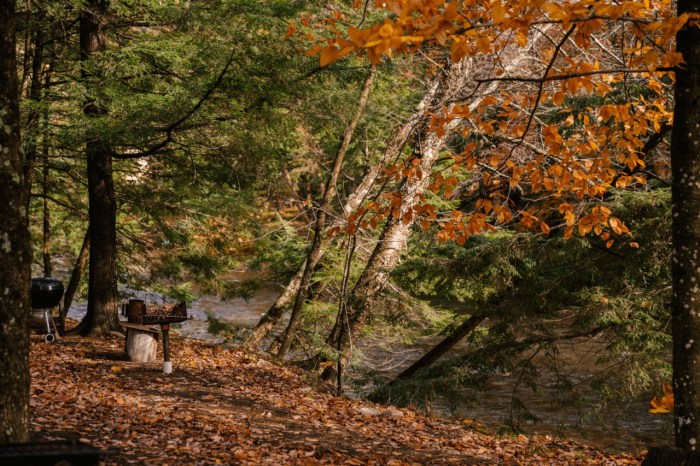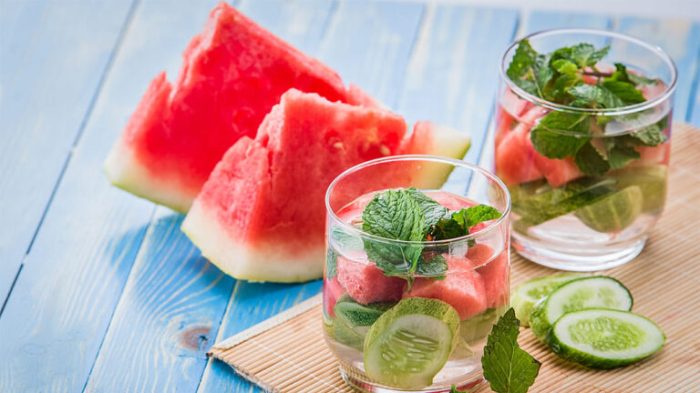
Beat the Heat: Foods & Activities to Stay Cool
Beat the heat foods and activities to help you stay cool – it’s a topic that becomes increasingly relevant as the mercury rises. Summer’s a time for fun and adventure, but it can also be a time for feeling overheated and uncomfortable.
This guide is your go-to resource for navigating the heat and staying cool and comfortable all summer long. We’ll cover everything from hydration strategies to cool-down activities, from delicious recipes to tips for staying cool indoors and outdoors.
From the moment you wake up to the time you wind down for the night, we’ll explore ways to stay cool and refreshed during the hottest months of the year. We’ll delve into the science behind why certain foods and activities help beat the heat, and we’ll offer practical tips and strategies that you can easily incorporate into your daily routine.
So, whether you’re planning a day at the beach, a backyard barbecue, or just trying to stay cool at home, read on to discover how to beat the heat and enjoy a comfortable summer.
Cool Down Activities

When temperatures soar, it’s essential to engage in activities that help lower your body temperature and prevent heat exhaustion. Cooling down effectively involves strategies that promote heat dissipation and restore your body’s natural equilibrium.
Activities to Beat the Heat
Activities that promote sweating, increase blood flow, and enhance evaporative cooling are particularly effective in lowering body temperature. Here’s a table outlining various activities and their benefits:
| Activity | Benefits | Time Commitment | Equipment Needed |
|---|---|---|---|
| Swimming | Provides full-body immersion in cool water, enhancing heat dissipation through convection. | 30 minutes to 1 hour | Swimsuit, towel, access to a pool or body of water |
| Taking a Cool Shower or Bath | Rapidly lowers skin temperature and promotes heat loss through conduction. | 10-15 minutes | Shower or bathtub with cool water |
| Sitting in Front of a Fan | Circulates air and enhances evaporative cooling by increasing airflow across the skin. | As needed | Fan |
| Applying Cool Compresses | Directly cools the skin and reduces heat stress. | 10-15 minutes | Cool water, washcloths or towels |
| Drinking Cold Beverages | Lowers internal body temperature by reducing core temperature. | As needed | Cold water, juice, or sports drinks |
“The human body is remarkably adept at regulating its temperature, but when external temperatures rise, it’s crucial to assist in this process.”
Physiological Effects of Cooling Activities
These activities work by promoting heat loss through various physiological mechanisms:* Evaporation:Sweating is the body’s primary mechanism for cooling. As sweat evaporates from the skin, it takes heat with it, lowering body temperature.
Conduction
Direct contact with cool surfaces, such as water or a cool compress, transfers heat away from the body.
Convection
Air movement, like from a fan, helps to carry away heat from the skin, enhancing evaporative cooling.
Radiation
The body naturally radiates heat into the environment. Cool surroundings can facilitate this process.
Tips for Maximizing Cooling Effects
To maximize the cooling effects of these activities, consider these tips:* Stay Hydrated:Drink plenty of water or electrolyte-rich beverages throughout the day to replace fluids lost through sweating.
Wear Loose-Fitting, Light-Colored Clothing
Light-colored clothing reflects sunlight, while loose-fitting clothing allows for better airflow and evaporation.
Beat the heat with refreshing watermelon and cucumber salads, and cool down with a dip in the pool! When you’re ready for a creative break, why not try making a fun and unique sock bouquet? Learn how to make a sock bouquet and surprise a friend with a thoughtful gift.
Afterwards, head back to your cool oasis and enjoy a frosty beverage – you deserve it!
Avoid Strenuous Activity During the Hottest Part of the Day
Schedule outdoor activities for cooler times of the day, such as early morning or evening.
Staying cool during the summer months is all about finding those little hacks that make a big difference. Sipping on iced tea, taking a dip in the pool, and enjoying a refreshing salad are just a few of my go-to strategies.
And, believe it or not, a little bit of spring cleaning can help too! A clean and organized home feels more spacious and airy, which can definitely help beat the heat. If you’re looking for some inspiration, check out over 100 spring cleaning tips and tricks to get you started.
Once your home is sparkling, you can focus on those cool treats and activities that make summer so enjoyable.
Seek Shade When Possible
Take breaks in the shade to reduce direct sun exposure.
Use a Cooling Mist or Spritzer
Misting your skin with cool water can provide a refreshing sensation and enhance evaporative cooling.
Stay Cool Indoors
When the heat is on, finding ways to stay cool indoors is essential. Here are some tips and strategies to help you beat the heat and maintain a comfortable indoor environment.
Air Circulation and Ventilation
Proper air circulation and ventilation are crucial for keeping your home cool. These methods help remove hot air and replace it with cooler air, creating a more comfortable indoor climate.
- Open Windows Strategically:Open windows during cooler hours, such as early morning or late evening, to allow fresh air to circulate. Close windows during the hottest part of the day to prevent warm air from entering.
- Create Cross-Ventilation:Open windows on opposite sides of your home to create a cross-breeze. This helps to draw cooler air through your house, expelling hot air.
- Use Fans:Ceiling fans can help circulate air, creating a cooling effect even when the temperature is high. Set the fan to rotate counter-clockwise in the summer to push cool air down.
Using Fans and Air Conditioners Effectively
Fans and air conditioners are common tools for cooling homes, but using them effectively can make a big difference in energy efficiency and comfort.
- Maximize Fan Efficiency:Place fans strategically to direct cool air toward you or areas where you spend the most time. Using a fan in conjunction with an air conditioner can help reduce energy consumption and improve comfort.
- Use Air Conditioners Wisely:Set your air conditioner thermostat to a comfortable temperature, ideally between 72-78 degrees Fahrenheit. Avoid setting it too low, as this can increase energy costs and strain the unit.
- Maintain Your Cooling Systems:Regularly clean and maintain your fans and air conditioners to ensure optimal performance. This includes changing filters, cleaning coils, and checking refrigerant levels.
Natural Cooling Methods
Natural cooling methods can provide relief from the heat without relying on electricity.
Staying cool during the summer heat is a must! From watermelon and cucumber salads to refreshing dips and icy treats, there are plenty of ways to beat the heat through your diet. And if you’re looking for a fun way to plan your meals, try creating a chalkboard menu with this framed chalkboard tutorial and tips for writing on it.
It’s a great way to get creative and stay organized with your summer menu, making sure you’re always stocked with the best heat-beating foods!
- Ice Packs:Place ice packs or cold compresses on your forehead, neck, and wrists to help lower your body temperature. You can also use ice packs to cool down your bedding or create a makeshift cooling pad.
- Cool Showers or Baths:A cool shower or bath can quickly lower your body temperature and provide a refreshing sensation. Avoid using extremely cold water, as this can cause a sudden drop in temperature and make you feel uncomfortable.
- Wear Loose, Light-Colored Clothing:Wearing loose-fitting, light-colored clothing allows your body to breathe and stay cool. Dark colors absorb more heat, making you feel warmer.
Beat the Heat Outdoors: Beat The Heat Foods And Activities To Help You Stay Cool
Staying cool while enjoying the outdoors during hot weather requires a proactive approach. You can have a safe and enjoyable experience by understanding the importance of shade, appropriate clothing, and staying hydrated.
Seeking Shade and Avoiding Direct Sunlight
Direct sunlight can significantly increase your body temperature, leading to heat exhaustion or even heatstroke. Seeking shade is crucial, especially during the hottest parts of the day. Trees, awnings, and other natural or man-made structures can provide welcome relief from the sun’s rays.
Wearing Lightweight and Breathable Clothing
Choosing the right clothing can make a big difference in staying cool. Lightweight, loose-fitting clothes made from breathable fabrics like cotton or linen allow air to circulate and help your body regulate its temperature. Darker colors absorb more heat than lighter colors, so opting for lighter shades can help you stay cooler.
Staying Hydrated and Avoiding Heat Exhaustion
Staying hydrated is essential for preventing heat exhaustion. Drink plenty of water throughout the day, even if you don’t feel thirsty. Avoid sugary drinks, as they can actually dehydrate you. Signs of heat exhaustion include heavy sweating, fatigue, dizziness, nausea, and muscle cramps.
If you experience any of these symptoms, move to a cool place, drink fluids, and rest. If symptoms worsen, seek medical attention immediately.
Heat-Related Illnesses

Summer is a time for fun and outdoor activities, but it’s also important to be aware of the dangers of extreme heat. Heat-related illnesses can range from mild to severe, and in some cases, can be life-threatening. Understanding the symptoms, causes, and prevention strategies for these illnesses can help you stay safe and healthy during the hot months.
Heat Exhaustion
Heat exhaustion is a mild form of heat-related illness that occurs when the body loses fluids and electrolytes through excessive sweating. This can happen when you are exposed to high temperatures for a prolonged period, especially if you are physically active or not properly hydrated.
Symptoms of Heat Exhaustion
- Heavy sweating
- Muscle cramps
- Weakness
- Headache
- Nausea
- Dizziness
- Fainting
Causes and Risk Factors for Heat Exhaustion
Heat exhaustion is caused by dehydration, which occurs when the body loses more fluids than it takes in. This can happen due to:
- Prolonged exposure to high temperatures
- Physical exertion in hot weather
- Not drinking enough fluids
- Certain medications
- Medical conditions such as heart disease or diabetes
Preventing and Treating Heat Exhaustion
Preventing heat exhaustion involves staying hydrated and avoiding strenuous activity during the hottest part of the day.
- Drink plenty of fluids, especially water, before, during, and after physical activity.
- Wear loose-fitting, light-colored clothing.
- Take breaks in the shade or air conditioning.
- Avoid alcohol and caffeine, which can dehydrate you.
If you experience symptoms of heat exhaustion, it’s important to move to a cool place and rest.
- Drink fluids, such as water or sports drinks, to replenish electrolytes.
- Remove any tight clothing.
- Apply cool compresses to your forehead and neck.
- Seek medical attention if your symptoms worsen or do not improve within a few hours.
Heat Stroke
Heat stroke is a serious medical emergency that occurs when the body’s temperature rises to a dangerously high level. This can happen when the body’s cooling mechanisms, such as sweating, are overwhelmed.
Symptoms of Heat Stroke
- High body temperature (above 103°F)
- Altered mental state, such as confusion, disorientation, or delirium
- Seizures
- Loss of consciousness
- Rapid, weak pulse
- Hot, dry skin
- Flushed face
Causes and Risk Factors for Heat Stroke
Heat stroke is caused by prolonged exposure to high temperatures, especially when combined with physical exertion or dehydration.
- Elderly individuals
- Young children
- People with chronic illnesses
- Athletes
- People who are overweight or obese
- People who take certain medications
Preventing and Treating Heat Stroke
Preventing heat stroke involves taking precautions to avoid overheating, such as staying hydrated, wearing appropriate clothing, and avoiding strenuous activity during the hottest part of the day.
- Drink plenty of fluids, especially water, before, during, and after physical activity.
- Wear loose-fitting, light-colored clothing.
- Take breaks in the shade or air conditioning.
- Avoid alcohol and caffeine, which can dehydrate you.
- Check on elderly individuals and young children regularly, especially during hot weather.
If you suspect someone is experiencing heat stroke, it’s crucial to seek immediate medical attention. While waiting for emergency services, you can try to cool the person down by:
- Moving them to a cool place.
- Removing any tight clothing.
- Applying cool compresses or ice packs to their neck, armpits, and groin.
- Fanning them to help cool them down.
Heat Rash, Beat the heat foods and activities to help you stay cool
Heat rash, also known as prickly heat, is a skin irritation caused by trapped sweat in the sweat glands. This can occur when the body is exposed to high temperatures and humidity.
Symptoms of Heat Rash
- Small, red bumps or blisters on the skin
- Itching or burning sensation
- Prickling or tingling sensation
Causes and Risk Factors for Heat Rash
Heat rash is caused by trapped sweat in the sweat glands, which can occur when the body is exposed to high temperatures and humidity.
- High temperatures
- Humidity
- Tight clothing
- Overheating
Preventing and Treating Heat Rash
Preventing heat rash involves keeping cool and dry.
- Wear loose-fitting, light-colored clothing made of breathable fabrics.
- Take cool showers or baths.
- Use a fan to circulate air.
- Avoid strenuous activity during the hottest part of the day.
If you develop heat rash, you can try to relieve the symptoms by:
- Applying cool compresses to the affected area.
- Using calamine lotion or hydrocortisone cream to reduce itching.
- Avoiding scratching the rash.
Heat Syncope
Heat syncope, also known as heat collapse, is a temporary loss of consciousness caused by a sudden drop in blood pressure. This can occur when the body overheats and blood flow to the brain is reduced.
Symptoms of Heat Syncope
- Dizziness
- Lightheadedness
- Fainting
Causes and Risk Factors for Heat Syncope
Heat syncope is caused by a sudden drop in blood pressure, which can occur when the body overheats and blood flow to the brain is reduced.
- Prolonged exposure to high temperatures
- Dehydration
- Standing for long periods
- Sudden changes in position
Preventing and Treating Heat Syncope
Preventing heat syncope involves staying hydrated and avoiding prolonged exposure to high temperatures.
- Drink plenty of fluids, especially water, before, during, and after physical activity.
- Avoid strenuous activity during the hottest part of the day.
- Take breaks in the shade or air conditioning.
- Avoid standing for long periods.
- If you feel dizzy or lightheaded, sit down and rest immediately.
If you experience heat syncope, it’s important to lie down with your legs elevated.
- Drink fluids, such as water or sports drinks, to replenish electrolytes.
- Seek medical attention if your symptoms worsen or do not improve within a few hours.

